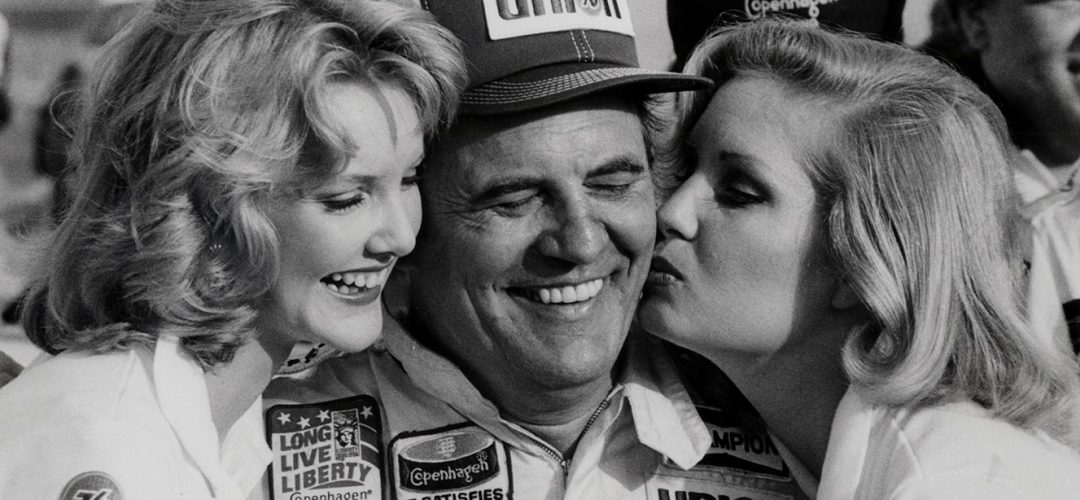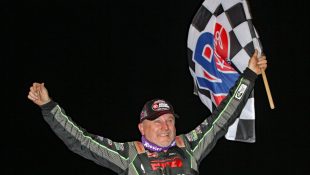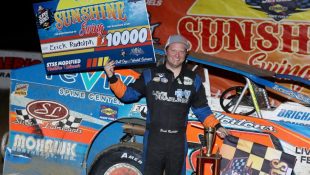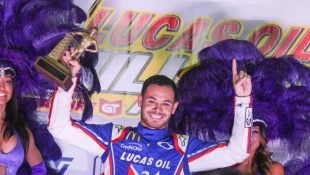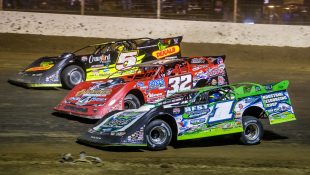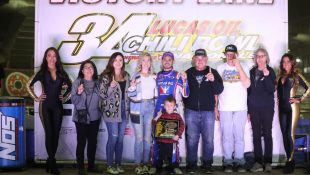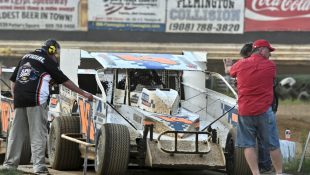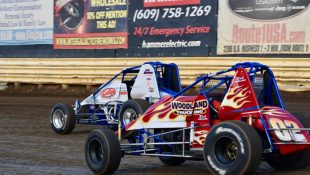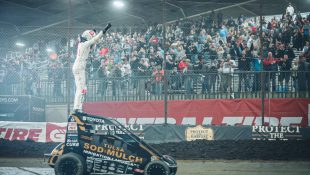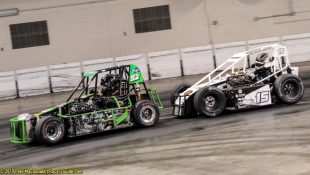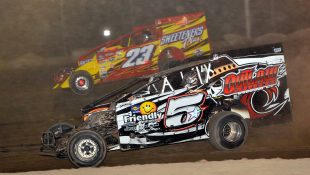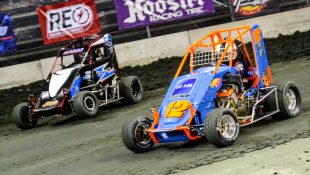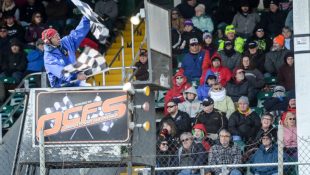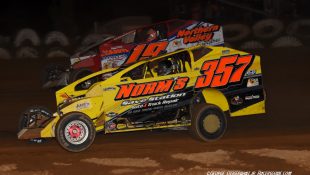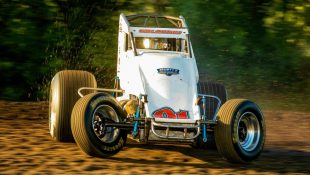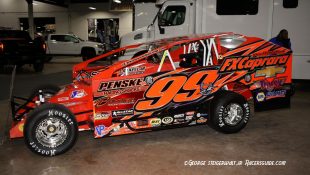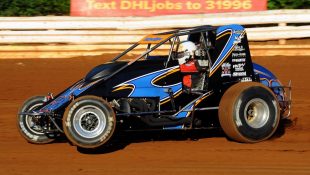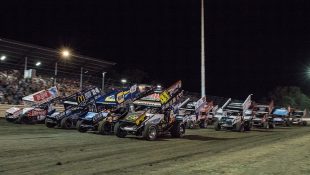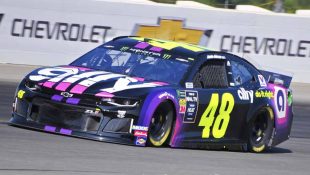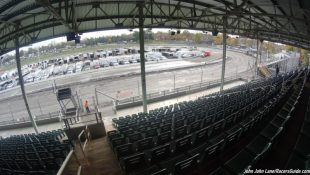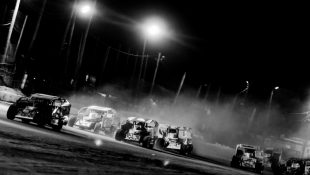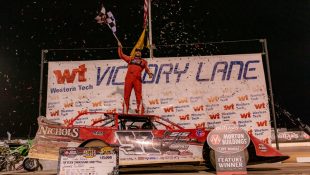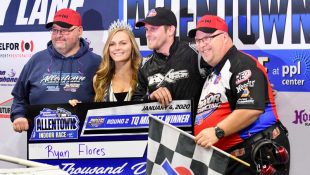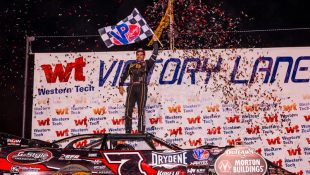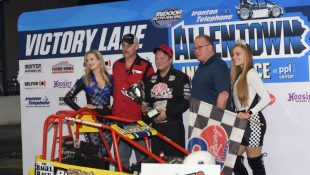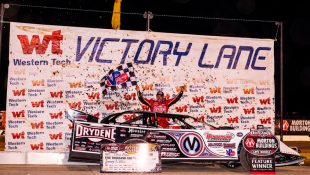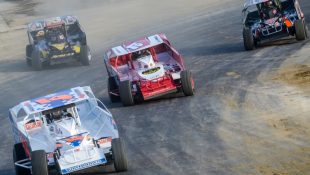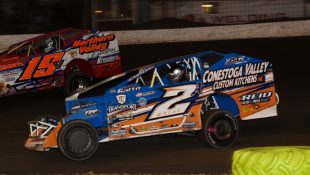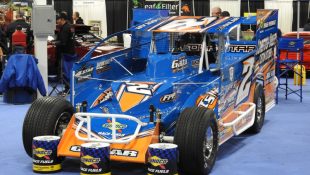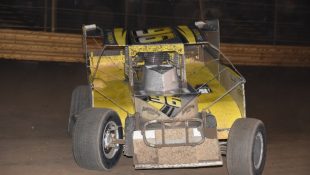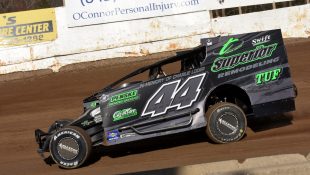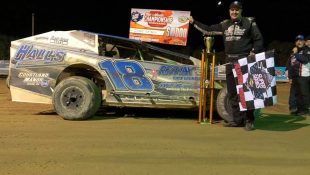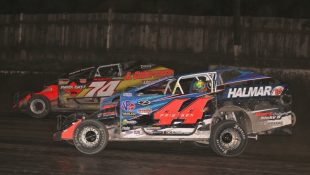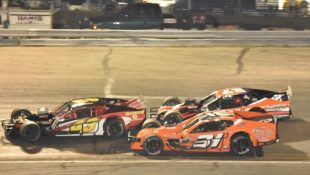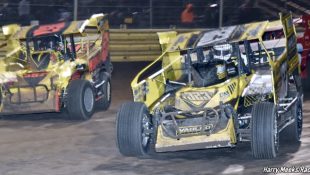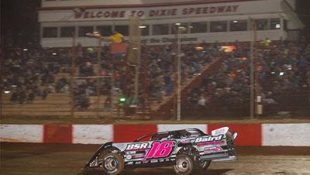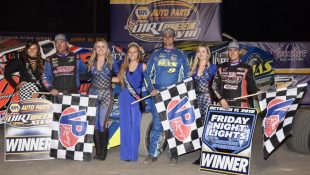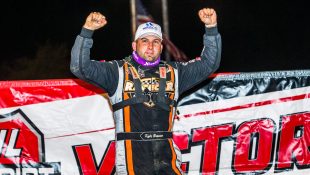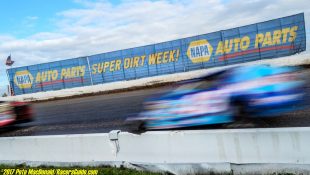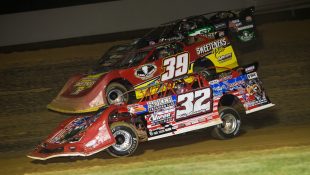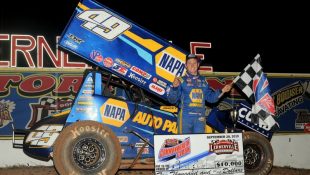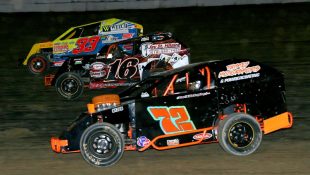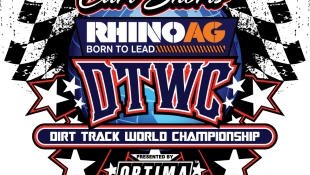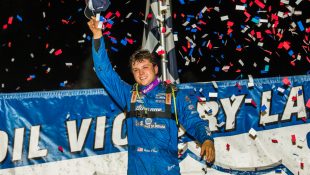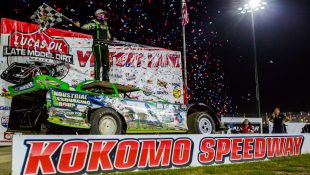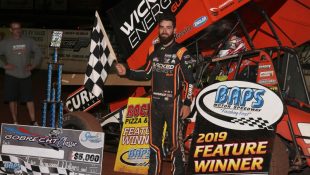Stock Car racing’s ‘Nice Guy Champion,’ Emmy-Winning Broadcaster Benny Parsons Enters NASCAR Hall of Fame
Story By: OWEN A. KEARNS / NASCAR WIRE SERVICE
Photos By: NASCAR PHOTO ARCHIVES
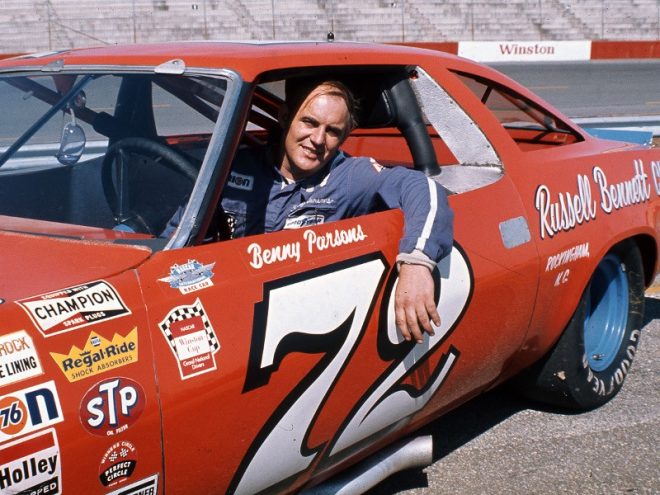 Charlotte NC.- January 18, 2017-A single word defined the late Benny Parsons: Beloved.
Charlotte NC.- January 18, 2017-A single word defined the late Benny Parsons: Beloved.
It mattered not whether you were fellow competitor, race fan or television viewer. Parsons was more than just a top premier series driver or broadcaster.
To race with him – or just to meet him – Parsons had the aura of being the best friend you wished you had.
Parsons became the NASCAR premier series champion in 1973. He won 21 times, a resume that included the 1975 Daytona 500.
“Benny didn’t win a lot of races – some thought he wasn’t ruthless enough – but few drivers won more friends and fans,” wrote Larry Woody in a 2014 Racin’ Today story.
“Ten minutes and you bonded with him,” said Rick Hendrick, whose Chevrolets Parsons drove in 1987.
Parsons, who died in 2007 at age 65, will be inducted into the NASCAR Hall of Fame in Charlotte, North Carolina on Friday (8 p.m. ET on NBCSN). His fellow inductees among the Class of 2017 include Hendrick, Richard Childress, Mark Martin and Raymond Parks.
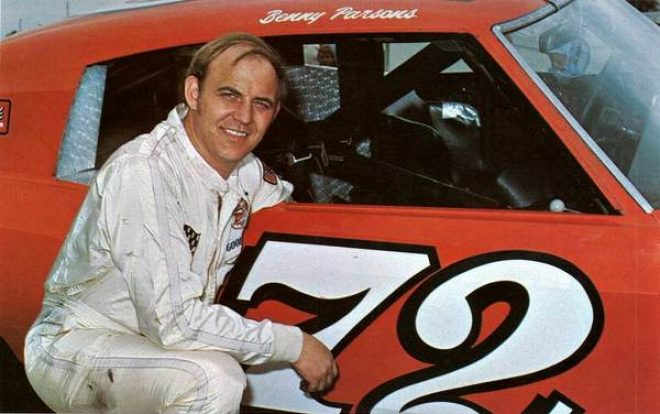 Benjamin Stewart “Benny” Parsons was born July 12, 1941 in rural Wilkes County, N.C. He grew up with his grandmother in a log cabin without plumbing or running water and remained in Parsonsville through high school, to play football at Millers Creek High School. Parsons then followed his family to Detroit, where his father ran the Metropolitan Cab Co. Parsons drove taxis – and thus would be known throughout his racing career as the “Detroit cab driver.”
Benjamin Stewart “Benny” Parsons was born July 12, 1941 in rural Wilkes County, N.C. He grew up with his grandmother in a log cabin without plumbing or running water and remained in Parsonsville through high school, to play football at Millers Creek High School. Parsons then followed his family to Detroit, where his father ran the Metropolitan Cab Co. Parsons drove taxis – and thus would be known throughout his racing career as the “Detroit cab driver.”
Unlike today’s competitors who start young, Parsons didn’t climb into a race car until age 21. He bought a friend’s car – which was in pieces – for $50, put on new sheet metal and entered a figure-8 race, spinning out in that first attempt.
Parsons won the Automobile Club of American (ARCA) championships in 1968-69 and made his Daytona 500 debut in 1969, finishing seventh. In 1970, the Ellerbe, North Carolina, resident ran 45 of 48 races – most of them for trucking company owner and North Carolina Speedway promoter L.G. DeWitt, ending the season eighth in points. He scored his first victory May 9, 1971 at South Boston (Virginia) Speedway.
The Parsons-DeWitt relationship produced 12 victories and the 1973 championship. Parsons took the title with a single victory and consistent finishes, even though NASCAR Hall of Famer David Pearson was the year’s dominant force with 11 wins in 18 starts – 10 fewer appearances than Parsons.
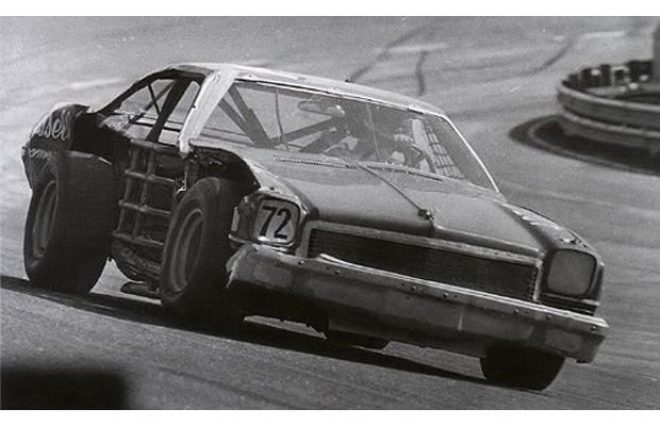 Parsons led the point standings from May’s event at Talladega Superspeedway on and wouldn’t be derailed by a crash 13 laps into October’s American 500 at Rockingham. His 23-year-old crew chief, Travis Carter, figured the car, body torn from the right side and roll cage twisted, was finished. Parsons climbed out and walked away.
Parsons led the point standings from May’s event at Talladega Superspeedway on and wouldn’t be derailed by a crash 13 laps into October’s American 500 at Rockingham. His 23-year-old crew chief, Travis Carter, figured the car, body torn from the right side and roll cage twisted, was finished. Parsons climbed out and walked away.
But what actually transpired is one of those examples of selflessness and unity that define racing. From every direction, mechanics from other teams – some still in the race – swarmed over the stricken Chevy.
One hour and 14 minutes after the wrecker deposited the car in the garage, Parsons returned his No. 72 to the track – in one observer’s description – “now resembling a plumber’s nightmare.”
“It was fantastic,” Parsons said later. “All the crews cheered when I went down pit road and as I went around the track I could see people waving me on. That’s the first time it ever happened and I’ll never forget it.”
Parsons went on the win for M.C. Anderson, NASCAR Hall of Famer Bud Moore and Johnny Hayes. His last victory came at Atlanta Motor Speedway in 1984. Along the way, Parsons became the first driver to qualify a stock car at more than 200 mph in 1982 at Talladega. He retired following the 1988 season.
Interestingly, much of Parsons’ racing career – and success – came before NASCAR truly became a national phenomenon. Television interest in the sport helped push it to the next level and Parsons soon became the face of the sport.
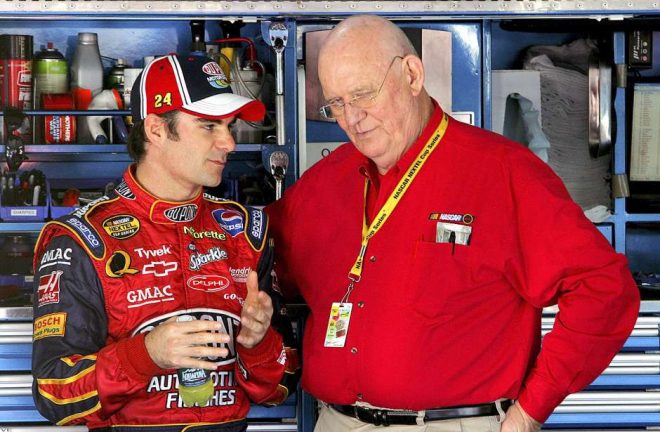 He was a commentator for The Nashville Network (TNN) and NBC, winning an Emmy for his work in 1996.
He was a commentator for The Nashville Network (TNN) and NBC, winning an Emmy for his work in 1996.
NASCAR Hall of Famer and fellow broadcaster Darrell Waltrip said Parsons’ delivery transcended nuts and bolts.
“He talked through that,” said Waltrip, in a Jan. 17, 2012 Newsday article. “He was able to deliver to the people. He just tried to be passionate about what he believed and he did a great job of explaining what people were seeing.”
Fellow broadcaster Matt Yocum said Parsons helped change television.
“When Benny came in, he had (a) little bit of a southern drawl and he had his personality,” said Yocum, quoted by Michiganradio.org last June. “Whether it was shtick of ‘Buffet Benny’ talking about the different restaurants in the area … his personality really warmed up the TV audience.”
“He was exactly the way he was in real life as he was on TV,” Mark McCarter wrote this month in the Anniston (Alabama) Star. “He was a magnetic personality.”
Parsons was voted one of NASCAR’s 50 Greatest Drivers in 1998 and was inducted into the International Motorsports Hall of Fame in 1994 and the Motorsports Hall of Fame of America in 2005.

